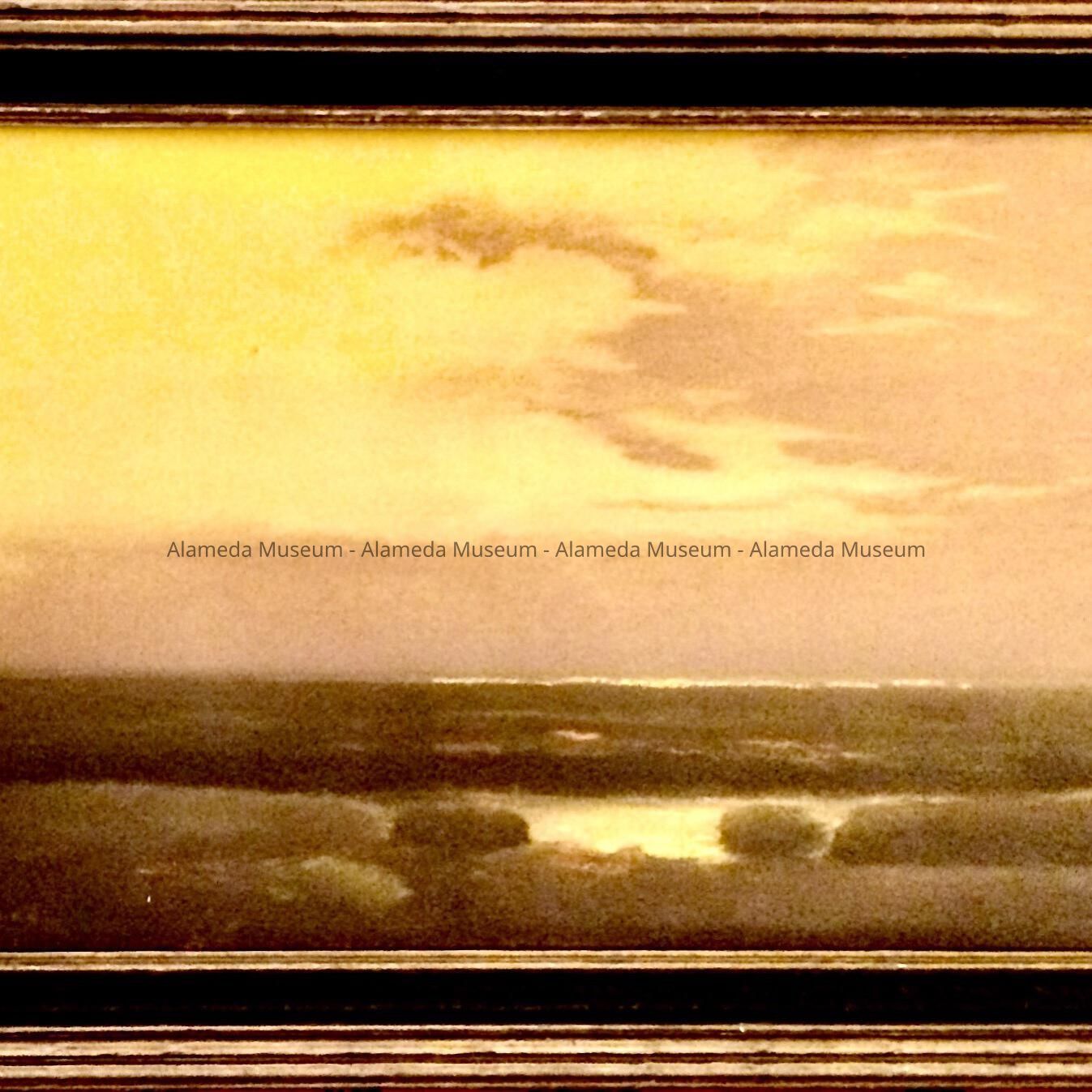Name/Title
Pastel Marsh Scene, by E. Siegfried, c. 1930-1950Entry/Object ID
2021.11.1Description
Acc. No. 21.11.1
Subject Category: Artists, Views
Date or Period: 1930-1950
Object: Painting, pastel, framed
Description: A pastel painting, likely on paper, of a marsh scene, with clouds on the right and above the horizon, with a channel running across horizontally with a larger area center right, and a line of light at the horizon suggesting a larger body of water. No bird, trees, or people are visible. Signed, 'E. Siegfried' in reddish-purple on the lower left, an unusual (though not unheard of) location for this artist.
The frame is wood, painted gold - concave black - gold. No backing paper, no dedication. On the back, a partial strip of transparent packing tape suggests some further information was once attached. On the right (seen from the back), the number 235 can be seen in what appears to be pencil on the frame, and what appears to be a calculation is written on the backing board, which is held in place with grey triangular glaziers tips.
A computer printed biography of Edwin Siegfried is scotch-taped to the back.
Size: L 17" X W25"; frame width about 2".
History of Object:
Painting by Edwin Siegfried (1889-1955).
Acquired from: unknown
Catalog Date: 1/29/2021Interpretative Labels
Label
1/29/2021 MvL: biography attached to backing board:
Edwin SIEGFRIED
1889 - 1955
Edwin Siegfried was born in Alameda, California on February 18, 1889 into a pioneer California family. His father was a prosperous tea importer who was a partner of Max and Joseph Brandenstein (forerunners of MJB Coffee). The family estate in Alameda at 2044 Alameda Avenue was complete with stables, tennis courts, and greenhouses to hold the family's orchid collection. During World War One Edwin served in the infantry. Upon returning home he
began painting without the benefit of art training. Initially he worked in oils but soon abandoned that medium in favor of pastels. Reared in affluence, the artist cared little for money or social postition and for many years maintained a home and studio in the attic at 1819 Central Avenue in Alameda. He was also a fine musician and played the organ for silent movies in San Francisco. During the depression years he worked as an artist for the Works Progress Administration doing a series of California missions. Although large in stature, he was a gentle, shy man who remained unmarried and seemed to prefer the company of children and animals. Siegfried died at the Oakland Veteran's Hospital on April 3, 1955. His subjects include the Monterey coastline, Lake Tahoe, Point Reyes, and, most often, the saltwater marshes of Alameda. He often used a kitchen broom to create wind and rain in his works. Exhibited: Golden Gate International Exposition, 1939; Alameda Historical Museum, 1983 (retrospective). Works held: Alameda City Hall; Alameda Public Library; Alameda Historical Museum; Christian Science Church (Alameda); Athenian Nile Club (Oakland).
--
This description is close to what can be found online as 'from Crocker Art Museum Store' (source: askART.com) and is probably from Edan Hughes' book.
